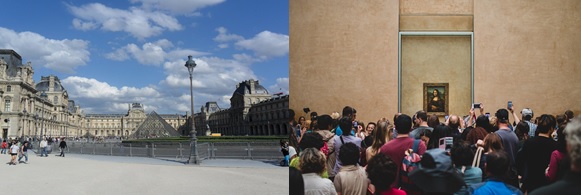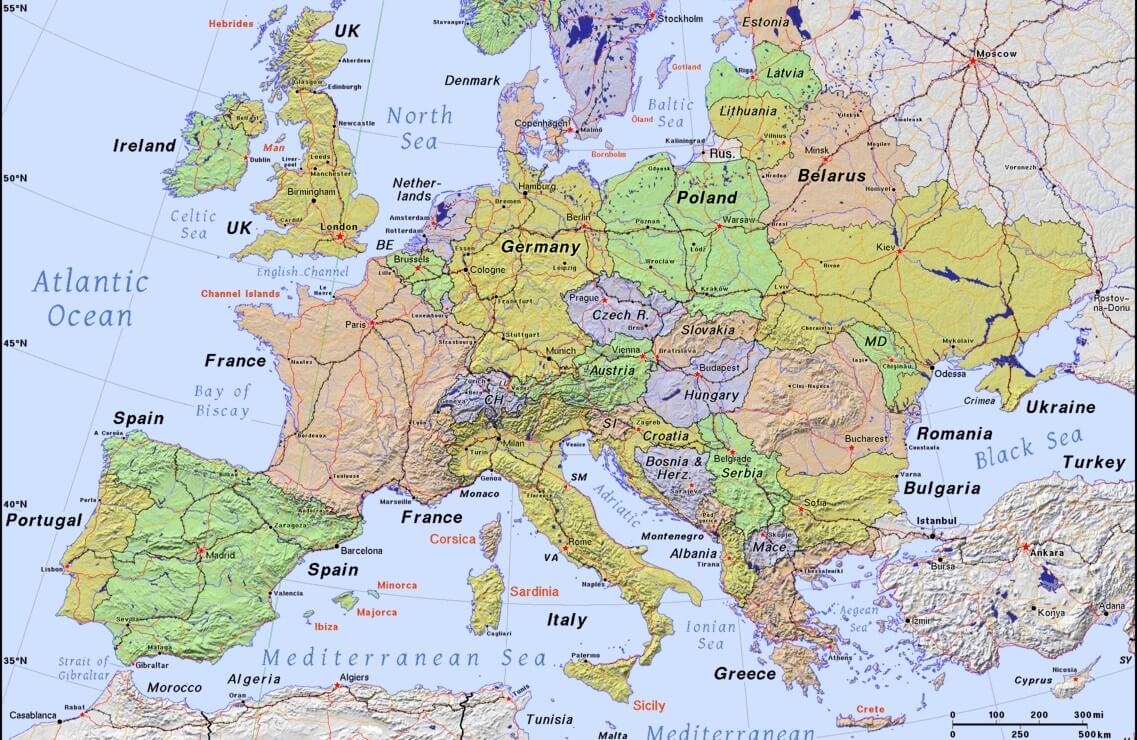Activity 1: Can You Find It?
Zoom in to find the following in the artwork:
- Chair
- Crossed Arms
- Curved Mouth
- Corners of the Eyes
- Mountains
- Road
- Bridge
Activity 2: Narrate the Artwork
- After studying the artwork, narrate the scene shown aloud using your own words.
Activity 3: Visit the Mona Lisa
Imagine taking a trip to visit the Mona Lisa in the Louvre museum.
- First, hop on the blazingly-fast Concord airplane and fly to Paris, France.
- Next, stop by the Eiffel tower and take the Metro to the Louvre museum. Note its famous glass and metal pyramid.
- Finally, enter the Louvre museum and navigate the crowd to see the Mona Lisa through the bulletproof glass.
Activity 4: Map the Artist
Zoom in on the map of Europe to find Italy, the country of the artist, Leonardo da Vinci.
Activity 5: Color Italy on the World Map

- Click the crayon above and complete page 37 of 'Third Grade Art History Coloring Book.'
Activity 6: Color the Artwork

- Click the crayon above and complete page 38 of 'Third Grade Art History Coloring Book.'






